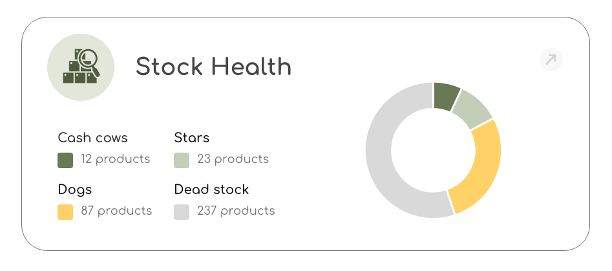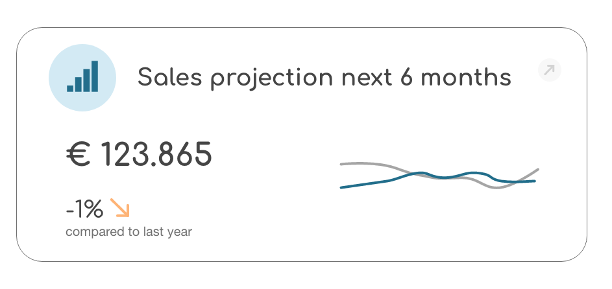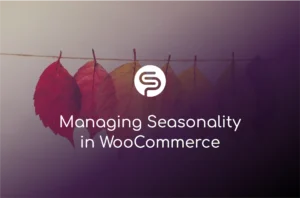Mastering the Retail Value Chain
The era of the local mom-and-pop shop as the heart of the neighborhood is a thing of the past. Imagine a charming main street where shop owners greet you by name, and you can find everything you need with a short walk. Once the center of commerce, these familiar stores, with local suppliers delivering goods to your door, are no longer the standard.
However, a successful business isn’t built on nostalgia. Shoppers have long since swapped physical carts for online ones, expecting fast, convenient delivery to their homes.
Today, that same cozy shop has evolved into a dynamic digital marketplace. The familiar storefront has given way to online stores that reach across continents. Products are just a click away, and suppliers may be located thousands of miles from the customer—but they still make it happen. Let’s explore how.
Table of Contents
What is a retail value chain?
The retail value chain is a finely tuned system that ensures products flow smoothly from suppliers to customers.
Think of it like a conveyor belt, delivering goods from suppliers right to users’ doorsteps—the more efficient the process, the more productive the business and the more satisfied the customer.
The retail value chain is a finely tuned system that ensures products flow smoothly from suppliers to customers.

Think of it like a conveyor belt, delivering goods from suppliers right to users’ doorsteps—the more efficient the process, the more productive the business and the more satisfied the customer.
It all starts with your store’s assortment, the product you plan to sell, the suppliers or manufacturers you use.
Once you have placed your orders, your at the hands of your partners and external forces. Inbound logistics starts, managing the arrival of products from various suppliers. These items are then carefully stored in warehouses. When a customer places an order, the process moves to order fulfilment, where the correct products are picked from the shelves, packed, and prepared for shipment.
Once packed, the packages are shipped and delivered directly to customers’ homes. If there’s an issue, returns management steps in to handle any returns seamlessly. At the core of this process is merchandise planning and inventory management, ensuring the business always knows what’s in stock and what needs replenishing.
Each part of this complex system works in harmony to ensure fast, hassle-free deliveries, keeping everything running smoothly. Of course, up-to-date retail supply chain software is key to making this happen.
In today’s fast-paced market, an efficient value chain isn’t just about streamlining your operations; it’s also about boosting revenue and setting a business up for long-term success.
So, why go through all this complexity, and more importantly, how to make sense of it all?
Let’s dig in and find out.
Optimising your own value chain
By simplifying your value chain, you can save time and money, allowing you to focus on growing your business.
The pandemic has changed how people shop, raising expectations for online shopping and making supply chain management even more challenging. And it’s only going to get tougher as ecommerce keeps growing.
If you’re facing slow sales or struggling to meet customer demands, effective and automated value chain management is crucial. It helps you increase output and revenue while reducing operating costs.
A well-run value chain not only boosts profits but also helps you accurately predict and meet customer demand, making your business more agile and responsive. Here’s how it benefits you:
A balanced assortment
A well-curated assortment ensures your customers find exactly what they want.
To optimize this, try to analyze customer preferences, sales trends, and seasonal demands. Offering a balance between core, popular products and unique items can attract a broad range of customers.
Using data analytics to monitor product performance helps identify which items to promote or discontinue, avoiding inventory stagnation.

Smart purchasing strategies
Effective purchasing is key to balancing inventory levels with demand. Having the right information will help you negotiate better deals with your suppliers through bulk buying or long-term partnerships, reducing costs.
Leveraging an automated inventory management tool will help you minimize overstocking while ensuring popular products remain available. This also prevents capital from being tied up in unsold goods, improving cash flow.
Optimise your inventory
Finding the right balance in inventory is crucial to any business. Too much stock ties up resources, while too little can lead to missed sales. The key is to keep stock levels just right to meet demand without overloading. Easier said than done, but not necessarily impossible.
Optimise your inventory by accurately forecasting demand and setting up a reliable restocking system. Keep a close eye on inventory levels, work with suppliers to plan for future needs, and adjust your operations as necessary in order to maintain the right stock levels.

A demand-driven approach can help you reduce waste and seize sales opportunities. Not to mention, it also helps you stay in sync with market needs. This involves adjusting your production and inventory based on real-time demand, as well as improving coordination between the marketing and sales teams.
Sales & Customer engagement
Sales optimisation involves more than just increasing revenue; it requires understanding customer behaviour and improving conversion rates.
Personalised marketing, based on browsing and purchasing history, can encourage repeat purchases.
Additionally, utilizing tools like A/B testing on websites to refine user experience (UX) and running targeted promotions can drive sales growth.
Automated inventory management with Shelf Planner
Shelf Planner’s AI-based inventory management platform supports you with all the tools you need to optimise your business.







